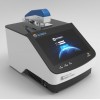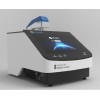Your shopping cart is empty!
Spectrophotometer: Precision In Tiny Sample Detection
Spectrophotometers allow for accurate analysis of very small samples, crucial in fields like DNA quantification and protein analysis. These devices offer high sensitivity and reliability, making them essential in labs where precision and minimal sample use are key.
Introduction
Spectrophotometers are crucial analytical instruments widely used across various fields such as physics, chemistry, biology, medicine, materials science, and environmental science. In industries like chemical manufacturing, pharmaceuticals, environmental monitoring, and metallurgy, UV-Vis spectrophotometers have broad and significant applications. With the ongoing technical trends towards miniaturization and higher precision, these instruments are increasingly essential for advanced analytical techniques in modern production and management sectors. The rising demand for accurate, small-volume sample analysis is driving the adoption of high-performance spectrophotometers in both research and industry, making them a hot topic in scientific instrumentation and analytical technology.
Application:
- Research Laboratories
- Medical and Biochemical Laboratories
- Biological Laboratories
- Chemical Laboratories
- Environmental Monitoring
Principle:
A spectrophotometer is an instrument used for quantitative and qualitative analysis of substances through spectrophotometry. Given the extremely small sample volumes required for nucleic acid and protein quantification as well as bacterial growth concentration measurement, the ultramicro spectrophotometer was developed. Today, ultramicro spectrophotometers have become standard instruments in modern molecular biology laboratories. Utilizing the surface tension properties of liquids, they require only 0.5 to 2 µL of sample volume. These devices are designed for rapid, small-volume, high-concentration analysis without the need for consumables like quartz cuvettes or capillaries. This makes them widely applicable in life science laboratories for areas such as proteomics and genomics. With ongoing technical trends in analytical instrumentation, the ultramicro spectrophotometer is increasingly recognized for its efficiency and precision, making it a hot topic in biotechnology and laboratory equipment.
Advantage:
- NanoBio300 ultramicro spectrophotometer is composed of a light source, monochromator, sample chamber, detector, signal processor, and display/storage system, distinguishing it significantly from traditional spectrophotometers. Here are the seven key differences:
- Minimal Sample Volume: Only 0.5 to 2 µL of sample is needed.
- No Cuvettes Required: Samples are directly pipetted onto the detection platform, where they automatically form a liquid column during measurement. After testing, simply wipe the sample off the platform with clean absorbent paper.
- Automatic Variable Path Length: Typically, three path lengths are available (1mm, 0.5mm, 0.25mm). The device can automatically adjust the path length based on the sample concentration, allowing for a wider range of concentration measurements. Unlike traditional and fixed-path spectrophotometers, the NanoBio300 can measure a broader range of concentrations without the need for dilution.
- Xenon Flash Lamp Source: Replaces the deuterium (UV) and tungsten (visible) lamps, offering a longer lifespan.
- No Preheating Required: Ready for immediate use at any time.
- Direct Concentration Display: The software provides direct readings of absorbance and calculates concentrations for nucleic acids, proteins, and fluorescent dyes.
- Compact Design: Smaller in size compared to traditional spectrophotometers.
This makes the NanoBio300 ultramicro spectrophotometer an advanced tool in life science applications, catering to modern needs in molecular biology and biochemistry labs. Its adaptability, precision, and efficiency reflect the latest technical trends in laboratory instrumentation, making it a top choice in the analytical equipment market.


Search
Categories
Popular Posts
Latest Posts






















Comments: 0
No comments